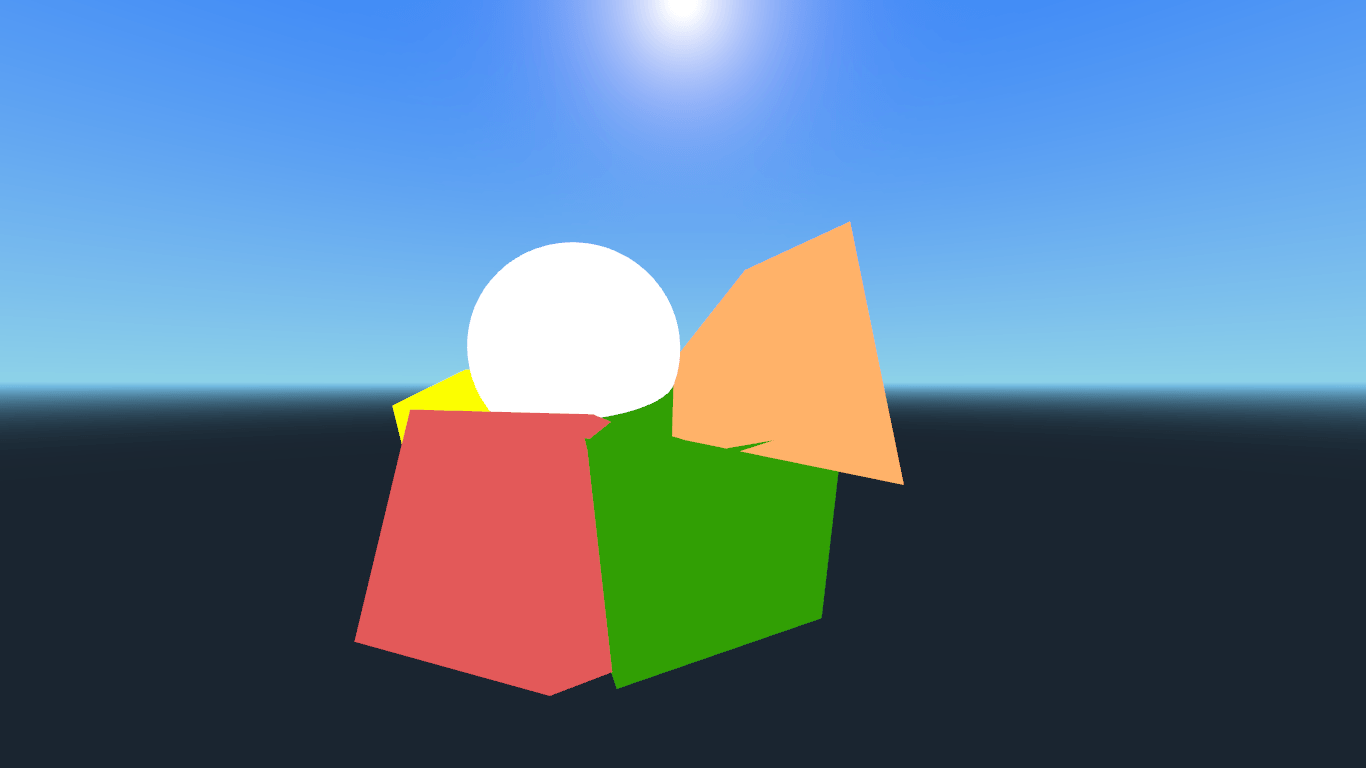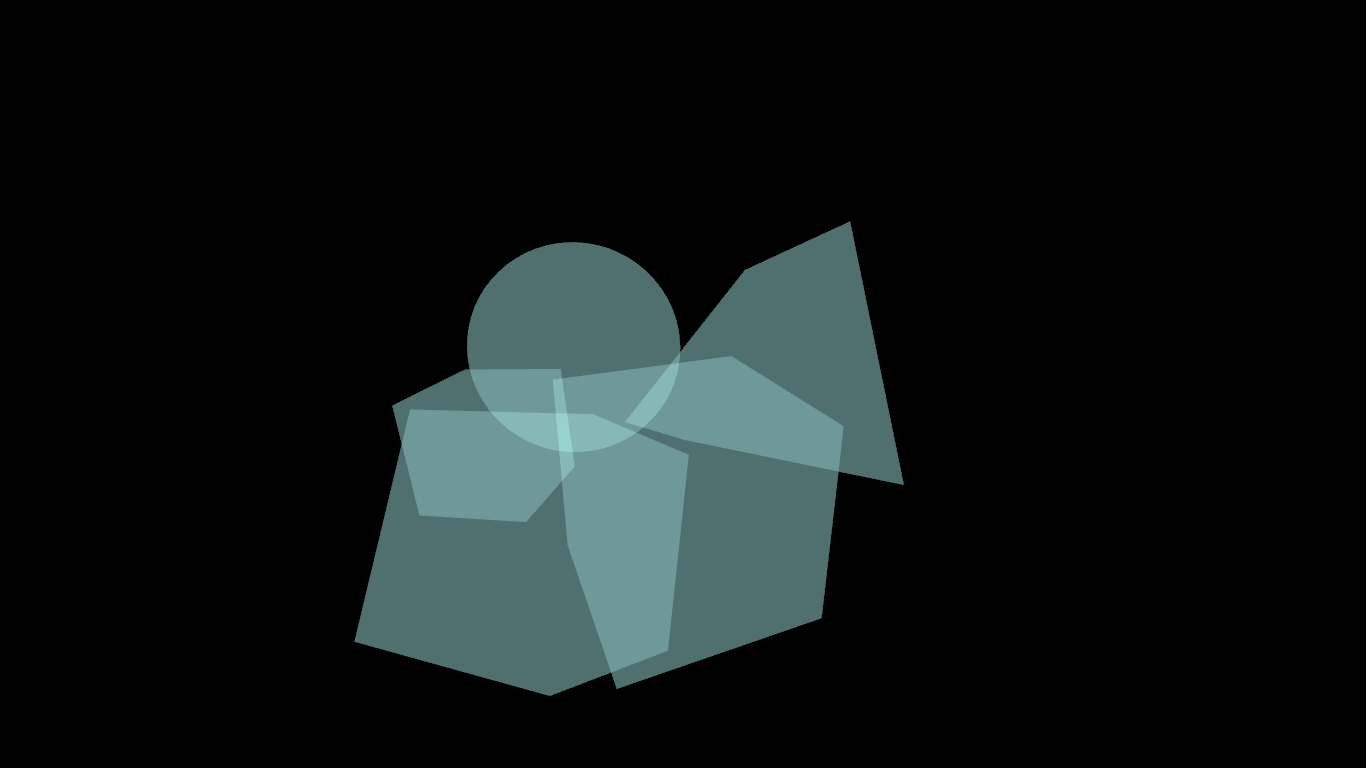Использование окон просмотра¶
Введение¶
Think of a Viewport as a screen onto which the game is projected. In order to see the game, we need to have a surface on which to draw it; that surface is the Root Viewport.

В сцену также можно добавить Viewports, чтобы было несколько поверхностей для рисования. Когда мы рисуем на Viewport, который не является Root, мы называем его render target. Мы можем получить доступ к содержимому цели рендеринга, обратившись к соответствующей texture. Используя Viewport в качестве цели рендеринга, мы можем либо рендерить несколько сцен одновременно, либо рендерить в texture, которая применяется к объекту в сцене, например, к динамическому скайбоксу.
Viewports have a variety of use cases, including:
Rendering 3D objects within a 2D game
Rendering 2D elements in a 3D game
Rendering dynamic textures
Generating procedural textures at runtime
Rendering multiple cameras in the same scene
What all these use cases have in common is that you are given the ability to draw objects to a texture as if it were another screen and can then choose what to do with the resulting texture.
Вход¶
Viewports are also responsible for delivering properly adjusted and scaled input events to all their children nodes. Typically, input is received by the nearest Viewport in the tree, but you can set Viewports not to receive input by checking 'Disable Input' to 'on'; this will allow the next nearest Viewport in the tree to capture the input.

For more information on how Godot handles input, please read the Input Event Tutorial.
Слушатель¶
Godot supports 3D sound (in both 2D and 3D nodes); more on this can be found in the Audio Streams Tutorial. For this type of sound to be audible, the Viewport needs to be enabled as a listener (for 2D or 3D). If you are using a custom Viewport to display your World, don't forget to enable this!
Cameras (2D & 3D)¶
When using a Camera / Camera2D, cameras will always display on the closest parent Viewport (going towards the root). For example, in the following hierarchy:

CameraA will display on the Root Viewport and it will draw MeshA. CameraB will be captured by the Viewport Node along with MeshB. Even though MeshB is in the scene hierarchy, it will still not be drawn to the Root Viewport. Similarly MeshA will not be visible from the Viewport node because Viewport nodes only capture nodes below them in the hierarchy.
There can only be one active camera per Viewport, so if there is more than one, make sure that the desired one has the "current" property set, or make it the current camera by calling:
camera.make_current()
By default, cameras will render all objects in their world. In 3D, cameras can use their cull_mask property combined with the VisualInstance's layer property to restrict which objects are rendered.
Scale & stretching¶
Viewports have a "size" property, which represents the size of the Viewport in pixels. For Viewports which are children of ViewportContainers, these values are overridden, but for all others, this sets their resolution.
It is also possible to scale the 2D content and make the Viewport resolution different from the one specified in size, by calling:
viewport.set_size_override(true, Vector2(width, height)) # Custom size for 2D.
viewport.set_size_override_stretch(true) # Enable stretch for custom size.
The root Viewport uses this for the stretch options in the project settings. For more information on scaling and stretching visit the Multiple Resolutions Tutorial
Миры¶
Для 3D, Viewport будет содержать World. По сути, это вселенная, которая связывает физику и рендеринг вместе. Пространственные узлы будут регистрироваться, используя World ближайшего Viewport. По умолчанию, вновь созданные Viewports не содержат World, а используют то же самое, что и их родительский Viewport (корневой Viewport всегда содержит World, в который объекты рендерятся по умолчанию). В World можно установить Viewport с помощью свойства "world", и это отделит все дочерние узлы этого Viewport от взаимодействия с родительским Viewport's World. Это особенно полезно в сценариях, когда, например, вы хотите показать отдельного персонажа в 3D, наложенного поверх игры (как в StarCraft).
As a helper for situations where you want to create Viewports that display single objects and don't want to create a World, Viewport has the option to use its own World. This is useful when you want to instance 3D characters or objects in a 2D World.
For 2D, each Viewport always contains its own World2D. This suffices in most cases, but in case sharing them may be desired, it is possible to do so by setting the Viewport's World2D manually.
For an example of how this works, see the demo projects 3D in 2D and 2D in 3D respectively.
Захват¶
It is possible to query a capture of the Viewport contents. For the root Viewport, this is effectively a screen capture. This is done with the following code:
# Retrieve the captured Image using get_data().
var img = get_viewport().get_texture().get_data()
# Flip on the Y axis.
# You can also set "V Flip" to true if not on the root Viewport.
img.flip_y()
# Convert Image to ImageTexture.
var tex = ImageTexture.new()
tex.create_from_image(img)
# Set Sprite Texture.
$sprite.texture = tex
But if you use this in _ready() or from the first frame of the Viewport's initialization,
you will get an empty texture because there is nothing to get as texture. You can deal with
it using (for example):
# Wait until the frame has finished before getting the texture.
yield(VisualServer, "frame_post_draw")
# You can get the image after this.
Viewport Container¶
If the Viewport is a child of a ViewportContainer, it will become active and display anything it has inside. The layout looks like this:

The Viewport will cover the area of its parent ViewportContainer completely
if Stretch is set to true in ViewportContainer.
Note: The size of the ViewportContainer cannot be smaller than the size of the Viewport.
Рендеринг¶
Из-за того, что Viewport является входом в другую поверхность рендеринга, он открывает несколько свойств рендеринга, которые могут отличаться от настроек проекта. Первое - это MSAA; вы можете выбрать использование разного уровня MSAA для каждого Viewport; поведение по умолчанию - DISABLED. Вы также можете настроить Viewport на использование HDR, HDR очень полезен, когда вы хотите сохранить значения в текстуре, которые находятся вне диапазона 0.0 - 1.0.
Если вы знаете, как будет использоваться Viewport, вы можете установить его Usage в 3D или 2D. Тогда Godot ограничит способ отрисовки Viewport в соответствии с вашим выбором; по умолчанию используется 3D. Режим использования 2D немного быстрее и использует меньше памяти по сравнению с 3D. Хорошей идеей будет установить свойство Usage у Viewport в 2D, если ваш вьюпорт ничего не отрисовывает в 3D.
Примечание
If you need to render 3D shadows in the viewport, make sure to set the viewport's Shadow Atlas Size property to a value higher than 0. Otherwise, shadows won't be rendered. For reference, the Project Settings define it to 4096 by default.
Godot also provides a way of customizing how everything is drawn inside Viewports using “Debug Draw”. Debug Draw allows you to specify one of four options for how the Viewport will display things drawn inside it. Debug Draw is disabled by default.

A scene drawn with Debug Draw disabled
The other three options are Unshaded, Overdraw, and Wireframe. Unshaded draws the scene without using lighting information so all the objects appear flatly colored the color of their albedo.

The same scene with Debug Draw set to Unshaded
Overdraw draws the meshes semi-transparent with an additive blend so you can see how the meshes overlap.

The same scene with Debug Draw set to Overdraw
Lastly, Wireframe draws the scene using only the edges of triangles in the meshes.
Примечание
The effects of the Wireframe mode are only visible in the editor, not while the project is running.
Render target¶
When rendering to a Viewport, whatever is inside will not be visible in the scene editor. To display the contents, you have to draw the Viewport's ViewportTexture somewhere. This can be requested via code using (for example):
# This gives us the ViewportTexture.
var rtt = viewport.get_texture()
sprite.texture = rtt
Or it can be assigned in the editor by selecting "New ViewportTexture"

and then selecting the Viewport you want to use.

Every frame, the Viewport's texture is cleared away with the default clear color (or a transparent
color if Transparent Bg is set to true). This can be changed by setting Clear Mode to Never or Next Frame.
As the name implies, Never means the texture will never be cleared, while next frame will
clear the texture on the next frame and then set itself to Never.
By default, re-rendering of the Viewport happens when the Viewport's ViewportTexture has been drawn in a frame. If visible, it will be rendered; otherwise, it will not. This behavior can be changed to manual rendering (once), or always render, no matter if visible or not. This flexibility allows users to render an image once and then use the texture without incurring the cost of rendering every frame.
Make sure to check the Viewport demos! Viewport folder in the demos archive available to download, or https://github.com/godotengine/godot-demo-projects/tree/master/viewport